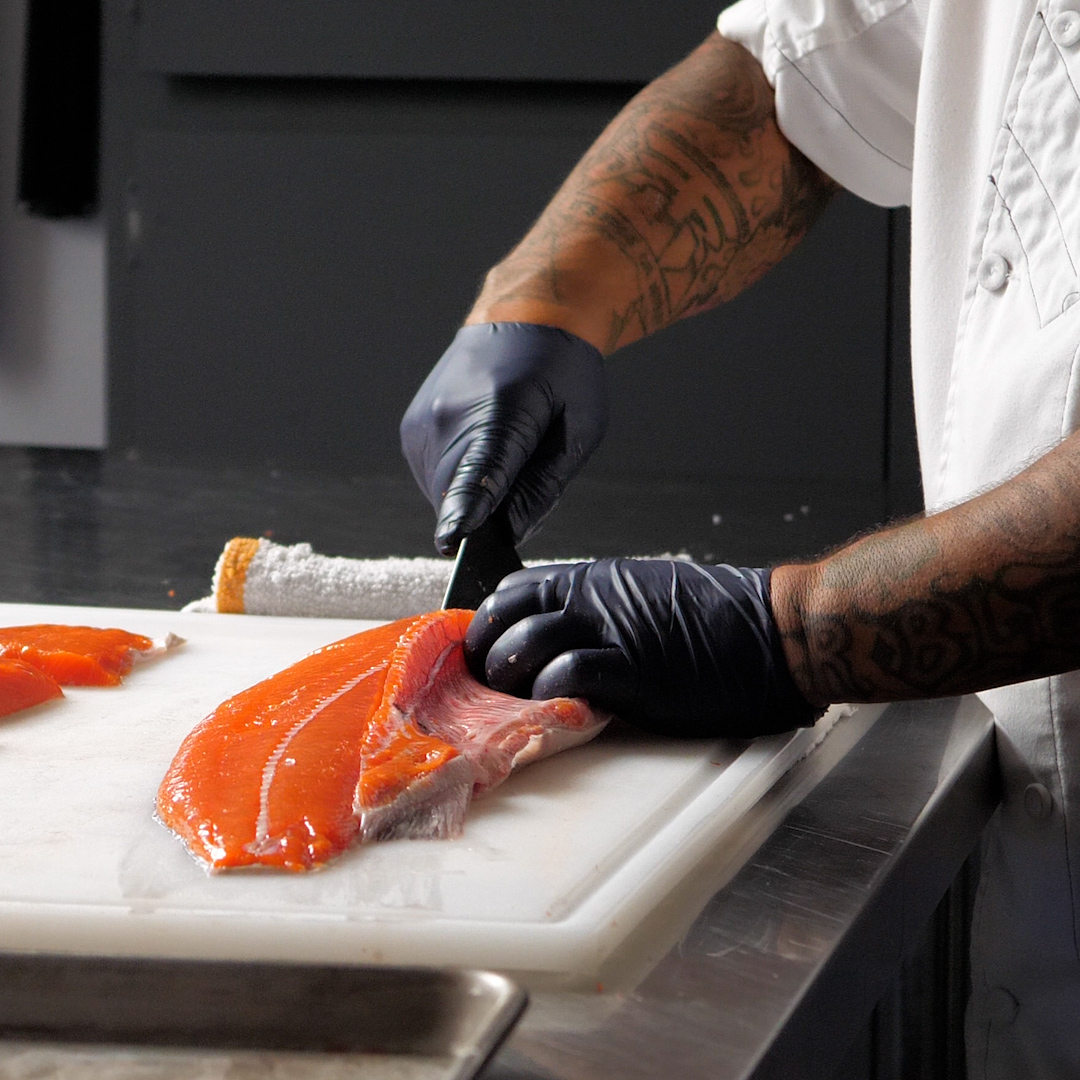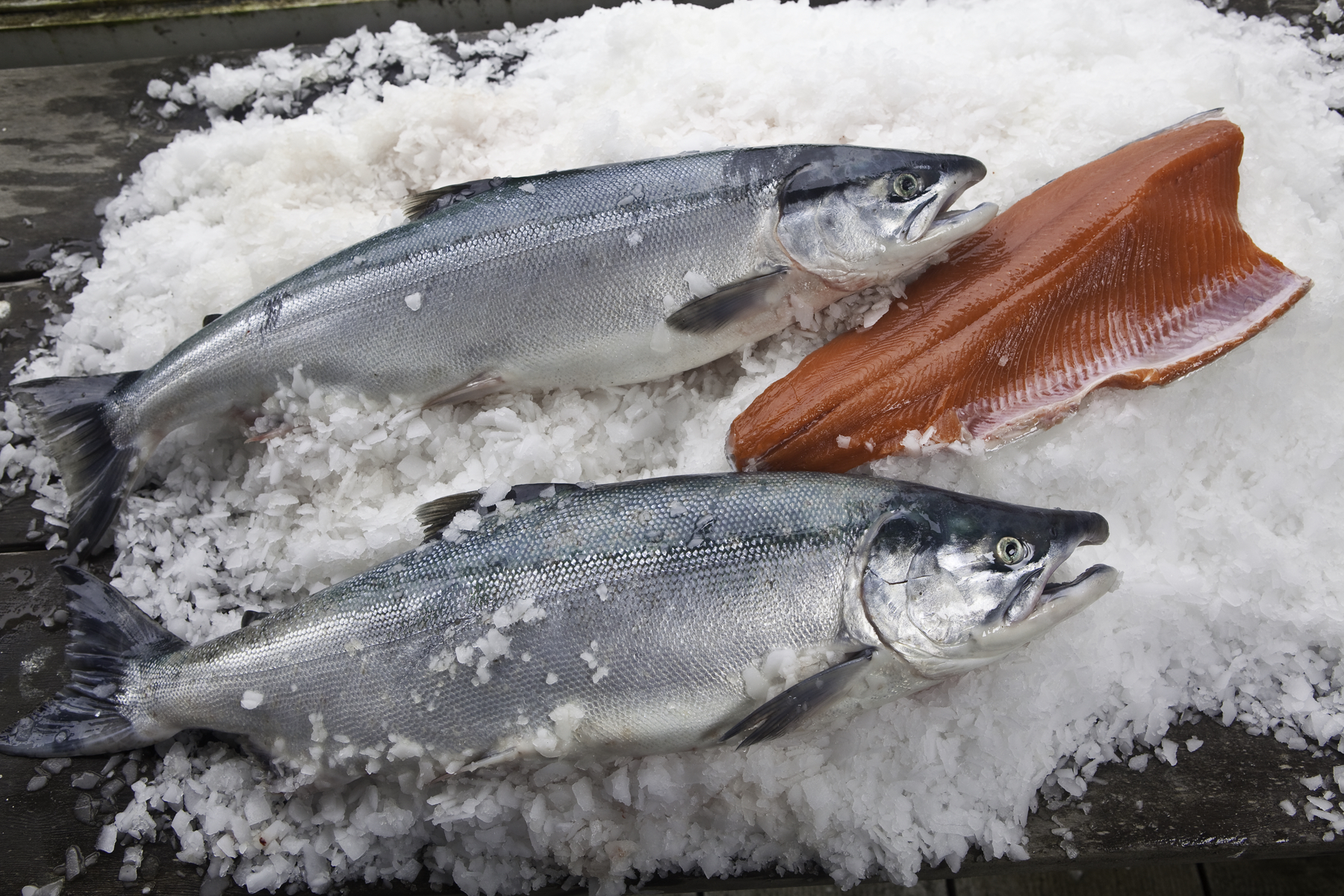By using our website, you agree to the use of cookies as described in our Cookie Policy
What Are The Nutritional Benefits Of Wild Alaska Salmon?
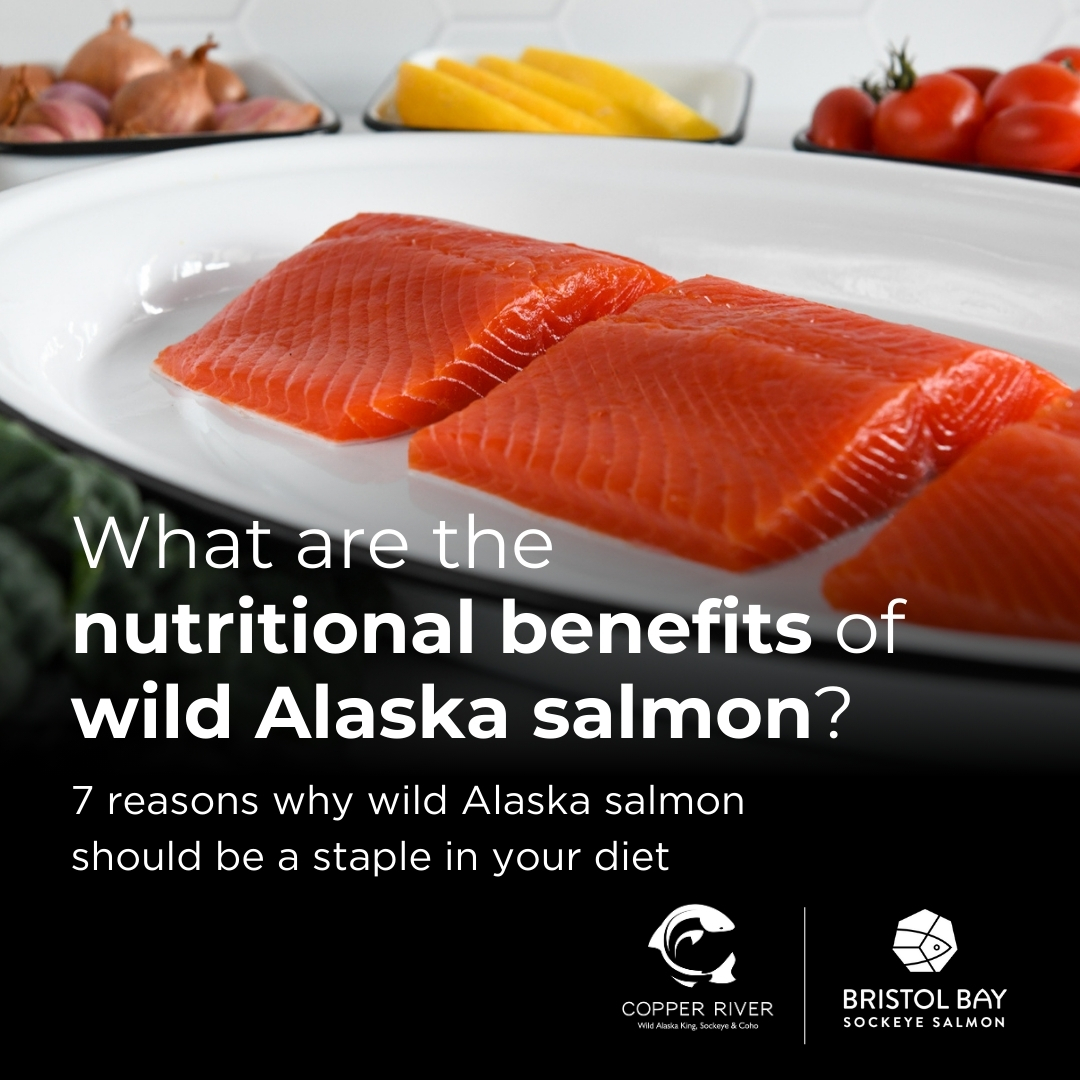
Wild Alaska salmon is not only a delicious and versatile ingredient but also a powerhouse of essential nutrients that support overall health. Packed with high-quality protein, omega-3 fatty acids, and vital vitamins and minerals, this wild-caught fish offers numerous benefits, from promoting heart health to boosting brain function. Whether grilled, baked, or smoked, incorporating salmon into your diet is an easy way to nourish your body with the nutrients it needs to thrive. Rich in anti-inflammatory omega-3s like EPA and DHA, Wild Alaska salmon helps reduce the risk of chronic diseases while supporting cognitive health and immune function. It’s also an excellent source of vitamin D, selenium, and B vitamins, which play key roles in energy production, metabolism, and antioxidant defense. For those seeking a nutrient-dense, sustainable protein option, wild Alaska salmon stands out as a superior choice for both flavor and wellness.
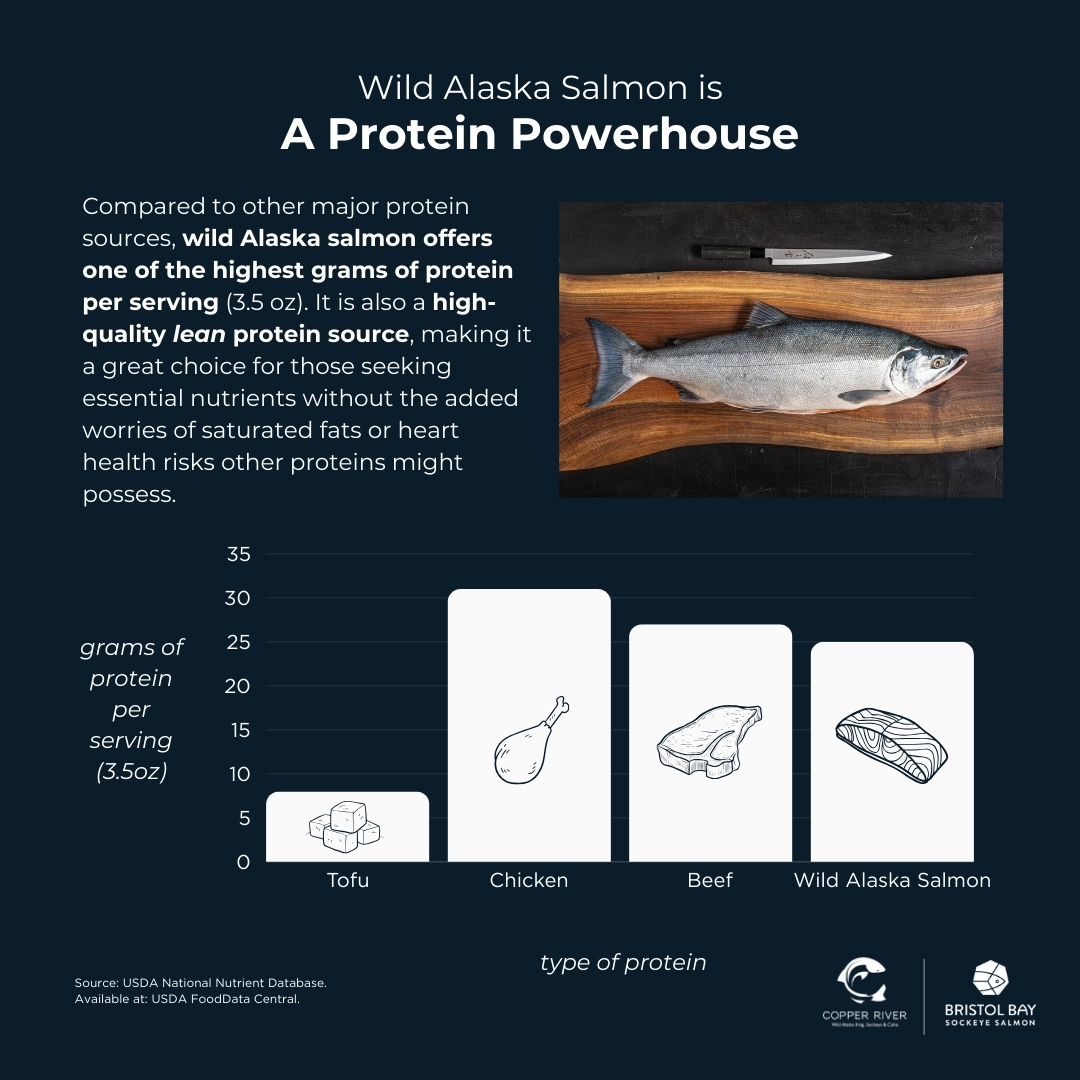
A Protein Powerhouse
Wild Alaska salmon--specifically Copper River salmon--stands out as a superior protein source, delivering an impressive 22-25 grams of high-quality protein per 3.5-ounce serving—rivaling or even surpassing other common protein options like chicken, beef, and tofu. Unlike some animal proteins that come with high levels of saturated fats, wild-caught salmon provides lean, nutrient-dense protein without compromising heart health. Its rich amino acid profile supports muscle repair, immune function, and overall vitality, making it an excellent choice for athletes, health-conscious individuals, and anyone seeking a balanced diet. What truly sets wild Alaska salmon apart is its combination of protein and essential nutrients, including omega-3 fatty acids, vitamin D, and selenium. While other proteins may offer similar grams of protein per serving, few provide the same heart-healthy, anti-inflammatory benefits that salmon does. Whether you're fueling a workout, managing weight, or simply prioritizing wellness, Wild Alaska salmon delivers both quality and nutrition in every bite. For a protein that powers your body while protecting your health, wild salmon is in a league of its own.
Note: The exact protein content may vary slightly depending on species and preparation, but wild Alaska salmon consistently ranks among the top lean protein sources.)
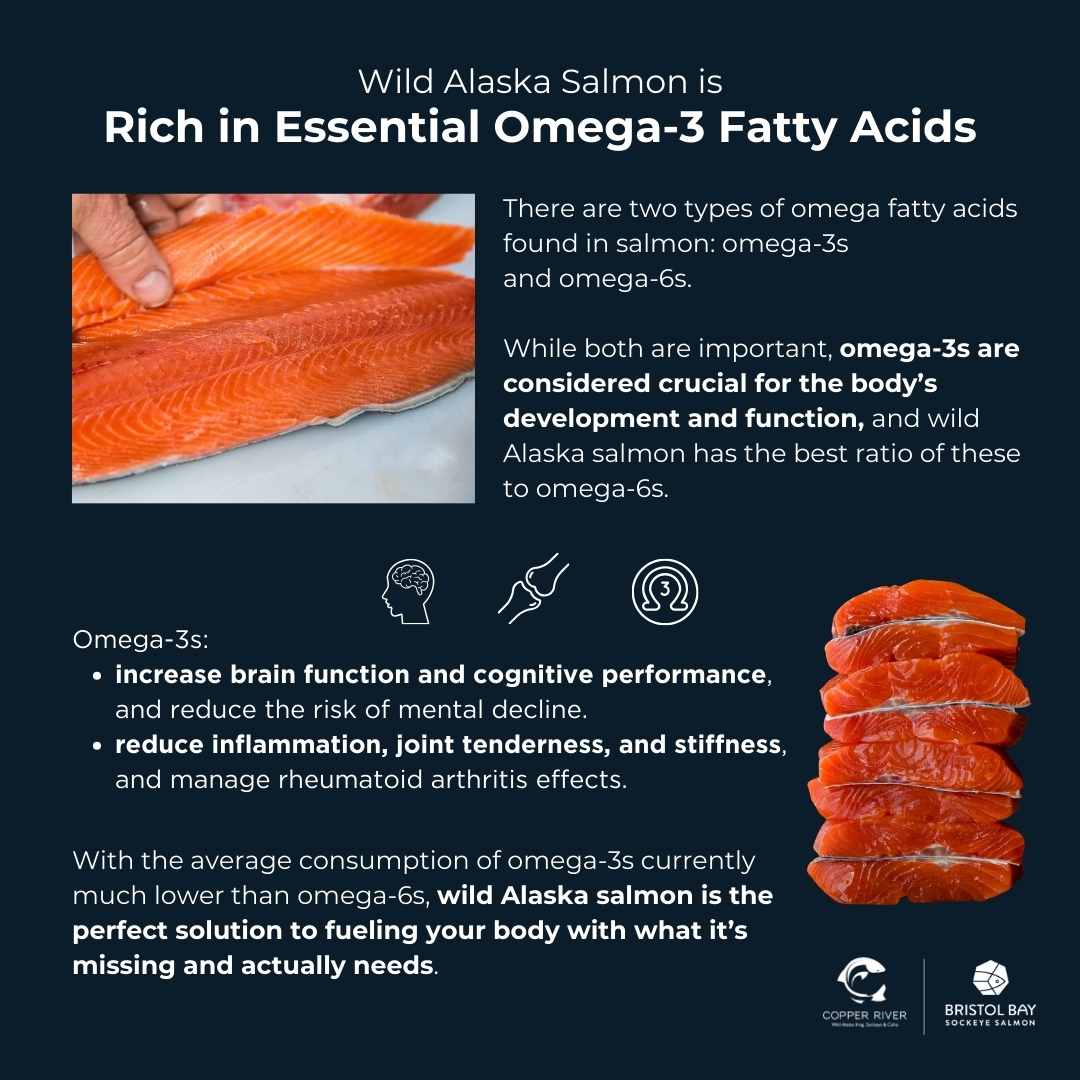
Rich in Omega-3 Fatty Acids
Salmon is one of nature’s richest sources of essential omega-3 fatty acids, particularly EPA (eicosapentaenoic acid) and DHA (docosahexaenoic acid), which play vital roles in brain health, heart function, and inflammation regulation. Unlike omega-6 fatty acids—which are abundant in processed foods and vegetable oils—omega-3s are often underconsumed in modern diets. Wild Alaska salmon provides an optimal 3:1 ratio of omega-3s to omega-6s, helping to restore balance and counteract the inflammatory effects of a typical Western diet. The benefits of omega-3s extend far beyond basic nutrition. Research shows they enhance cognitive function, supporting memory and focus while reducing the risk of age-related mental decline. For those with joint issues, omega-3s act as a natural anti-inflammatory, easing stiffness and discomfort associated with conditions like rheumatoid arthritis. Additionally, these healthy fats contribute to cardiovascular wellness by lowering triglycerides, improving blood flow, and reducing the risk of heart disease. With most people falling short of their omega-3 needs, incorporating wild Alaska salmon into meals is a delicious and effective way to nourish your body with what it truly craves—clean, sustainable, and science-backed nutrition.
Fun fact: Salmon from pristine Alaskan waters, like Copper River, are especially high in omega-3s due to their natural, nutrient-rich diets.
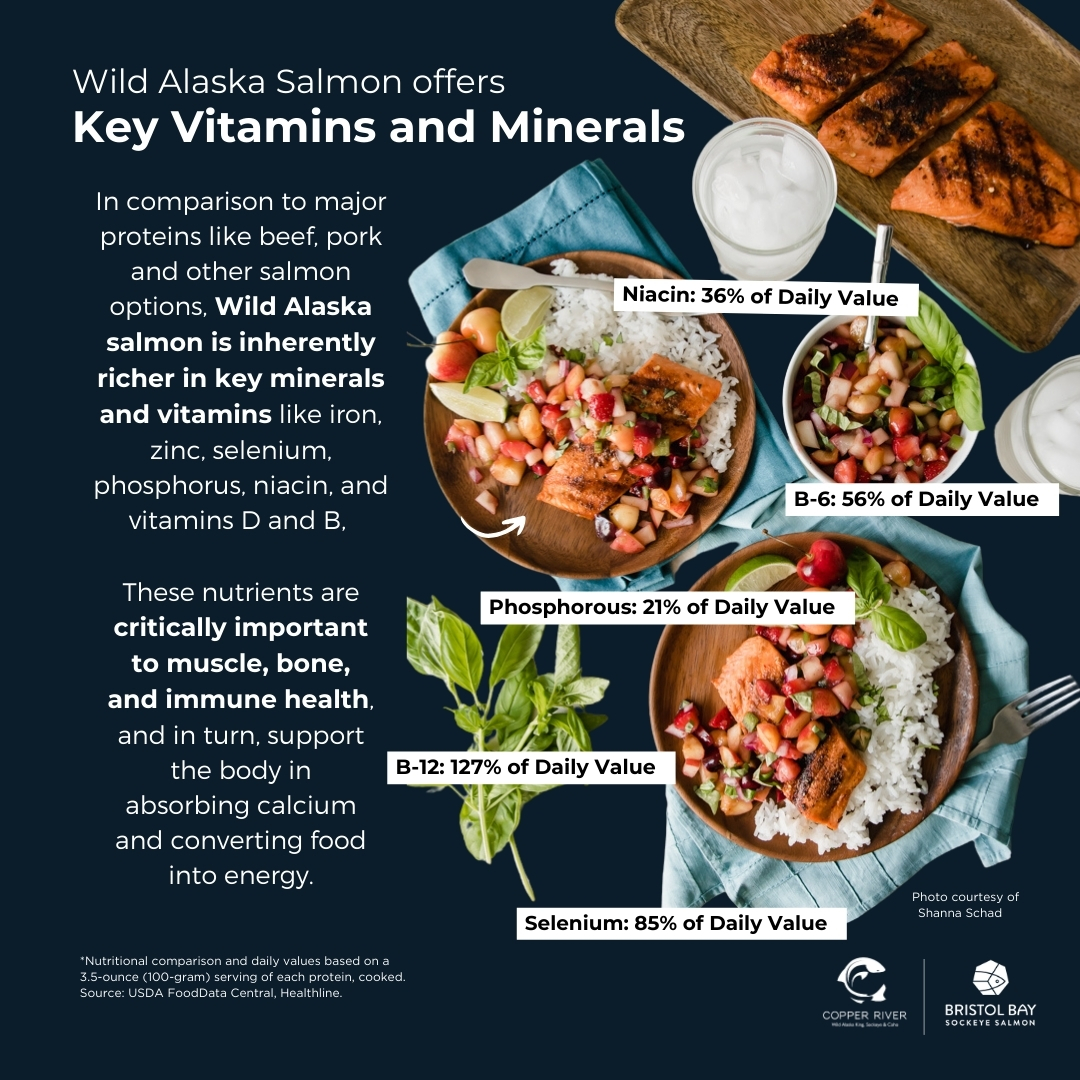
Key Vitamins and Minerals
Salmon delivers significantly higher levels of iron, zinc, selenium, phosphorus, and B vitamins, all of which play critical roles in maintaining optimal health. These nutrients work synergistically to support muscle function, strengthen bones, boost immunity, and enhance energy metabolism, making salmon a true superfood for overall wellness. A single 3.5-ounce (100g) serving of wild Alaska salmon provides an impressive 127% of the daily value for vitamin B12, crucial for nerve function and red blood cell production, along with 85% of your daily selenium needs, a potent antioxidant that protects cells from damage. It’s also rich in phosphorus (21% DV) for strong bones and teeth, niacin (36% DV) for cardiovascular health, and vitamin B6 (56% DV), which aids in metabolism and cognitive development. Unlike many land-based proteins, wild Alaska salmon offers these nutrients without excessive saturated fats, making it one of the most nutrient-dense choices for a balanced diet. Whether you’re looking to fuel an active lifestyle, support immune resilience, or simply eat cleaner, wild Alaska salmon provides a natural, delicious way to meet your body’s nutritional demands.
Pro tip: For the highest nutrient retention, opt for gently cooked or lightly seared salmon—overcooking can diminish some heat-sensitive vitamins like B12 and D.
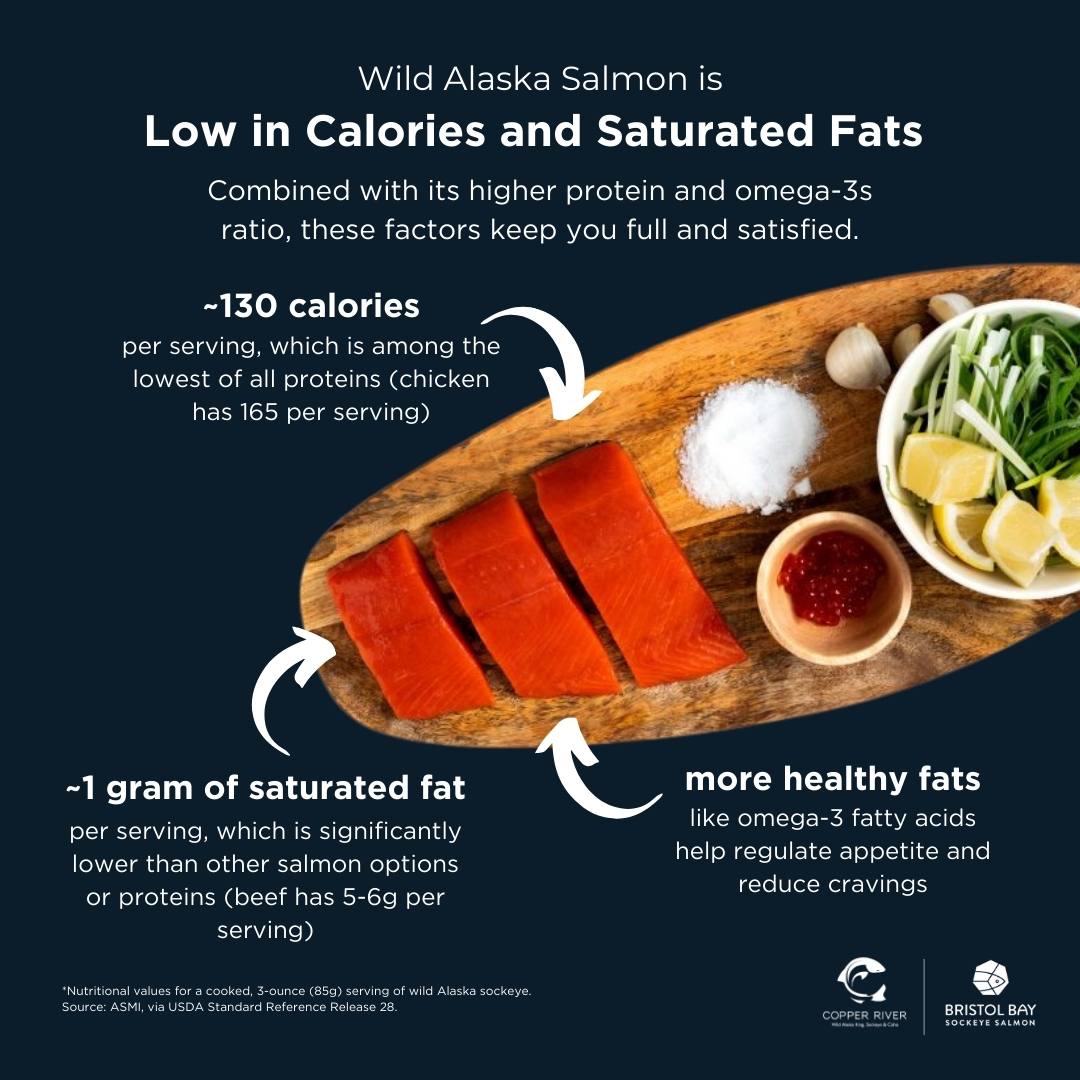
Low in Calories and Saturated Fats
Wild Alaska salmon stands out as a remarkably efficient source of nutrition, offering an ideal balance of low calories, minimal saturated fat, and high-quality protein—all while delivering superior health benefits. With just ~130 calories per 3-ounce serving, it provides more protein with fewer calories than many alternatives (like chicken, which typically contains 165 calories for the same portion). This makes it a perfect choice for weight management, athletic performance, or simply maintaining energy levels without excess calories. What truly sets wild Alaska salmon apart is its exceptionally low saturated fat content—just 1 gram per serving—compared to beef (5-6g) or even some farmed salmon varieties. Instead, it’s packed with heart-healthy unsaturated fats, including omega-3s, which not only support cardiovascular health but also help regulate appetite and reduce cravings by promoting satiety. The combination of high protein, beneficial fats, and low calorie density makes wild Alaska Salmon a uniquely satisfying food that fuels your body efficiently, without the drawbacks of heavier, fattier proteins. Whether you’re meal-prepping for fitness goals or simply seeking a nutritious, balanced diet, wild Alaska Salmon delivers flavor, nourishment, and lasting satisfaction in every bite.
Note: These nutritional advantages are especially pronounced in wild-caught species like sockeye, known for their lean profile and robust omega-3 content.
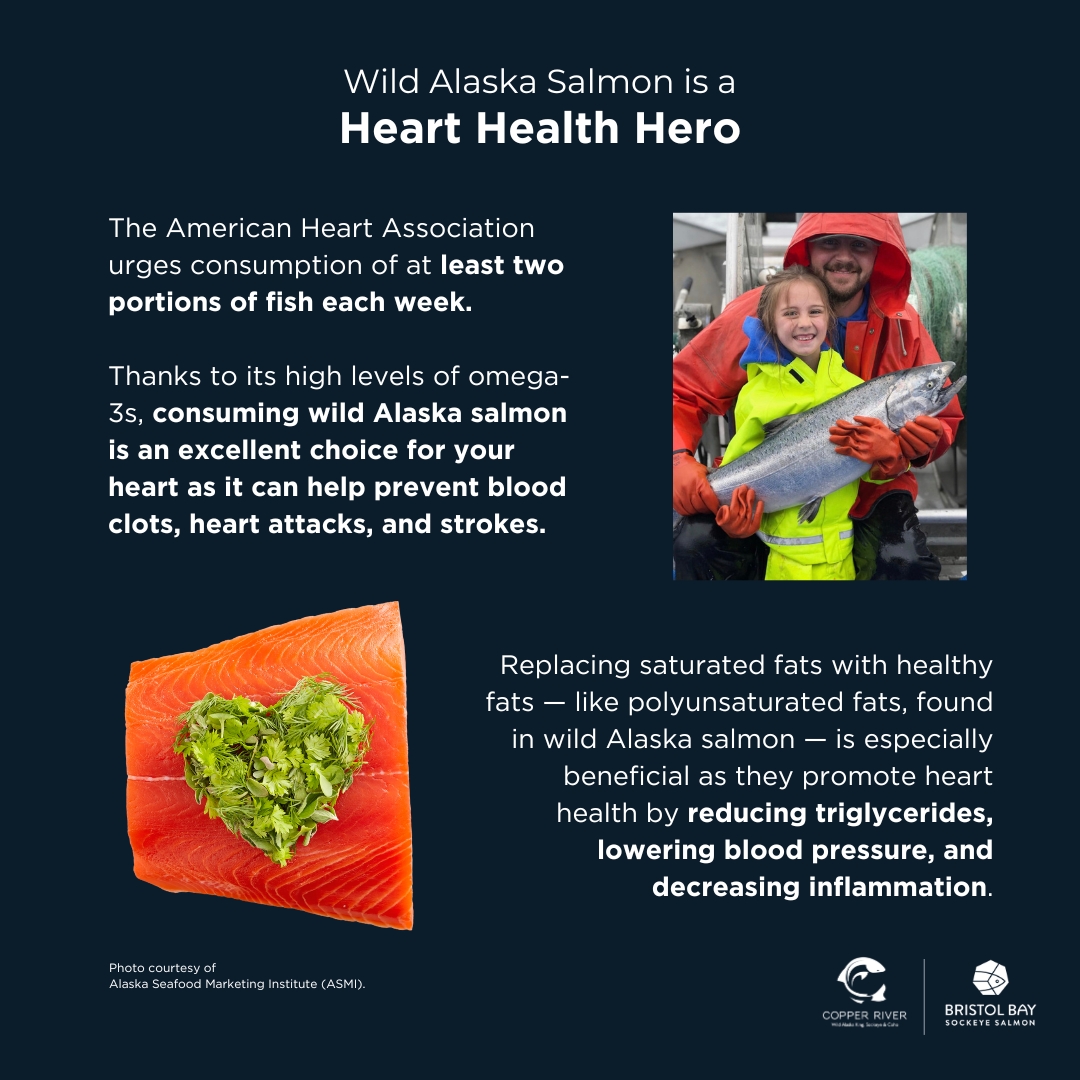
Your Heart's Best Defense
The American Heart Association specifically recommends eating fish like wild Alaska salmon at least twice weekly—and for excellent reason. Packed with cardioprotective omega-3 fatty acids (EPA and DHA), wild salmon actively works to prevent blood clots, maintain healthy blood pressure, and reduce arterial inflammation, significantly lowering risks of heart attacks and strokes. Unlike proteins high in saturated fats, salmon's unique nutritional profile makes it one of nature's most effective foods for cardiovascular prevention. By replacing saturated fats (found in red meat and processed foods) with salmon's polyunsaturated and monounsaturated fats, you directly combat three major heart disease risk factors: elevated triglycerides, hypertension, and chronic inflammation. Studies show regular salmon consumption can reduce triglycerides by up to 25-30%, while the potassium and selenium in salmon further support circulation and vascular health. Whether grilled, baked, or poached, every serving of wild Alaska salmon delivers a powerful combination of nutrients that don't just sustain your heart—they actively optimize its function for lifelong vitality.
Pro Tip: For maximum heart benefits, choose oil-poached or baked salmon over high-heat frying to preserve delicate omega-3s.
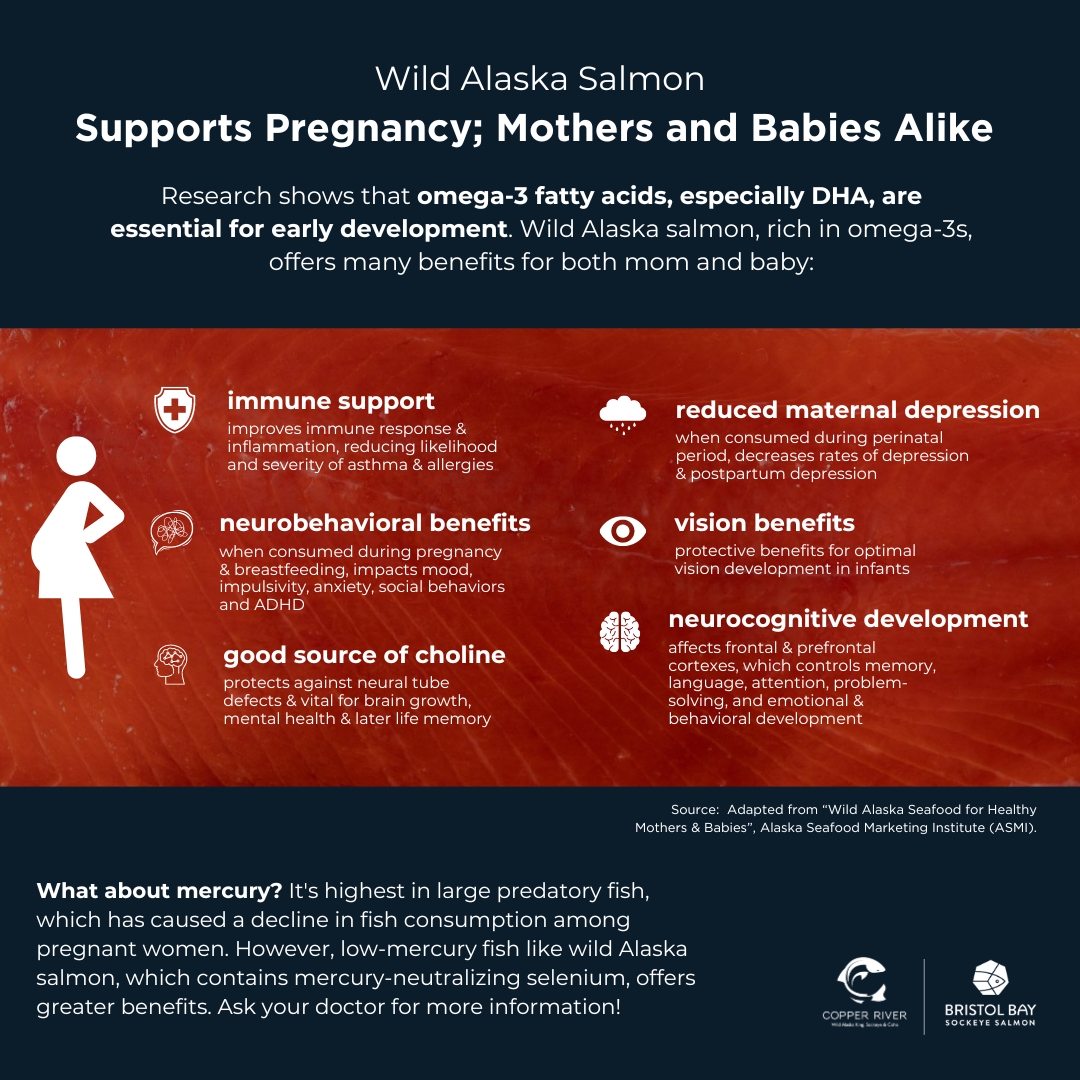
A Superfood for Mother & Child
Wild Alaska salmon emerges as one of nature's most powerful prenatal nutrients, delivering critical omega-3s (especially DHA) and choline that directly fuel fetal brain development and maternal health. Unlike processed prenatal supplements, salmon provides these nutrients in their most bioavailable form, working synergistically to:
Build baby's brain – DHA comprises 60% of the infant prefrontal cortex, enhancing future cognitive abilities, attention span, and emotional regulation
Protect maternal mental health – Regular consumption lowers perinatal depression rates by 30-50% through anti-inflammatory effects on neural pathways
Fortify immune systems – Children of salmon-eating mothers show 40% reduced risk of asthma and eczema through immune-modulating effects
The selenium-rich, low-mercury profile of wild Alaska salmon makes it uniquely safe compared to other seafood – its natural selenium content actually neutralizes trace mercury, making it safer than avoiding fish altogether (which deprives babies of essential neurodevelopmental nutrients).
Beyond pregnancy, these benefits extend through breastfeeding and early childhood. Just 2-3 servings weekly provide enough DHA to:
✓ Sharpen infant visual acuity by 30%
✓ Reduce ADHD symptom risk by nearly 25%
✓ Build neural connections for lifelong learning capacity
Medical organizations now specifically recommend wild Alaskan salmon as a first-choice protein for expecting mothers – a rare whole food that simultaneously optimizes both physiological development and psychological resilience for two generations.
Clinical Note: The 2020-2025 Dietary Guidelines for Americans explicitly list salmon among the "Best Choices" for pregnant/breastfeeding women due to its unmatched nutrient density and safety profile.

Nature’s Antioxidant Powerhouse
The vibrant ruby-red flesh of wild Alaska salmon isn’t just visually stunning—it’s a visible sign of its extraordinary antioxidant content. This natural coloring comes from astaxanthin, a potent carotenoid pigment that salmon accumulate through their wild diet of krill, plankton, and other marine organisms. Unlike farmed salmon (which often relies on synthetic additives for color), wild salmon develop their rich hue naturally, signaling superior nutritional value. Astaxanthin is one of nature’s most powerful antioxidants, offering 10x the free-radical-fighting capacity of other carotenoids like beta-carotene. Its benefits extend far beyond aesthetics:
Heart Health: Neutralizes oxidative stress in cardiovascular tissues, reducing plaque formation.
Anti-Aging: Crosses the blood-brain and retinal barriers to protect neural and visual cells.
Beauty Boost: Enhances skin elasticity, reduces UV damage, and strengthens hair/nail growth.
Research shows wild salmon contains 2-4x more astaxanthin than farmed varieties. Just one serving delivers enough of this "king of antioxidants" to:
✓ Combat inflammation at the cellular level
✓ Enhance workout recovery by reducing muscle oxidation
✓ Provide natural sunscreen-like protection for skin
This is why wild Alaska salmon isn’t just food—it’s preventative medicine in delicious form, offering defense against everything from wrinkles to chronic disease.
Did You Know? Astaxanthin’s antioxidant potency is so high, it’s being studied for astronaut nutrition to combat space radiation effects.
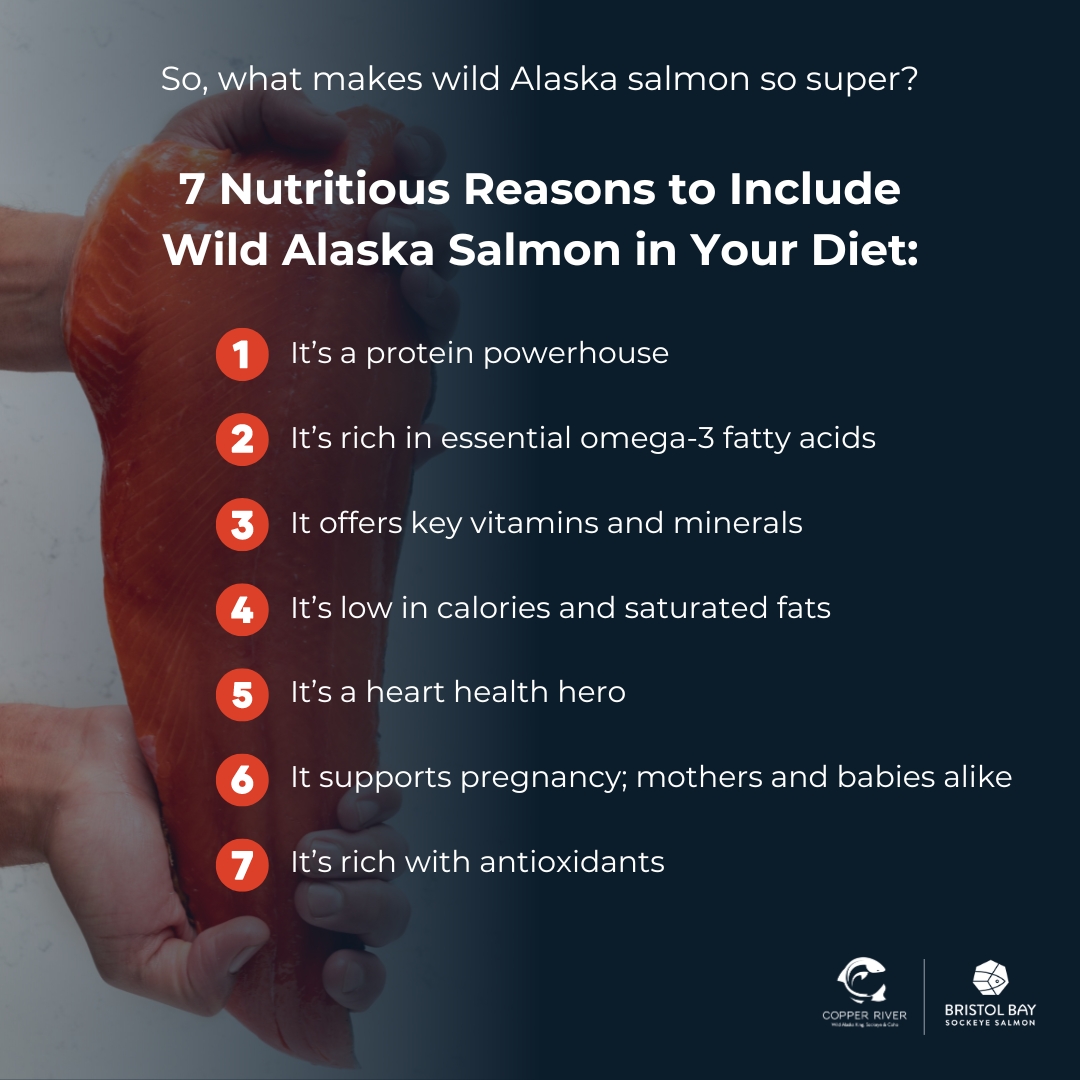
Join the Movement
Hungry for more? Follow Copper River and Bristol Bay on their journey to share the wonders of wild Alaska salmon. From breathtaking landscapes to behind-the-scenes fishing adventures, our stories will inspire you to choose wild, sustainable seafood and help protect these treasures of the sea.
A Partnership for Quality and Sustainability
The collaboration between CRPWSMA and BBRSDA is rooted in a shared commitment to promoting the unique qualities of wild Alaska sockeye salmon while educating consumers about sustainable seafood choices. Both organizations represent some of the most pristine and productive salmon fisheries in the world. The Copper River and Bristol Bay regions are renowned for their wild sockeye, which are celebrated for their rich flavor, firm texture, and vibrant color. By working together, CRPWSMA and BBRSDA aim to highlight the differences between wild-caught and farmed salmon, ensuring that consumers can make informed decisions when purchasing seafood.
This partnership also underscores the importance of sustainable fishing practices. Wild Alaska sockeye salmon is harvested using methods that prioritize the health of the ecosystem and the long-term viability of salmon populations. Both CRPWSMA and BBRSDA are dedicated to preserving the natural habitats of these fish, ensuring that future generations can continue to enjoy the benefits of wild Alaska salmon.
‹ Back


